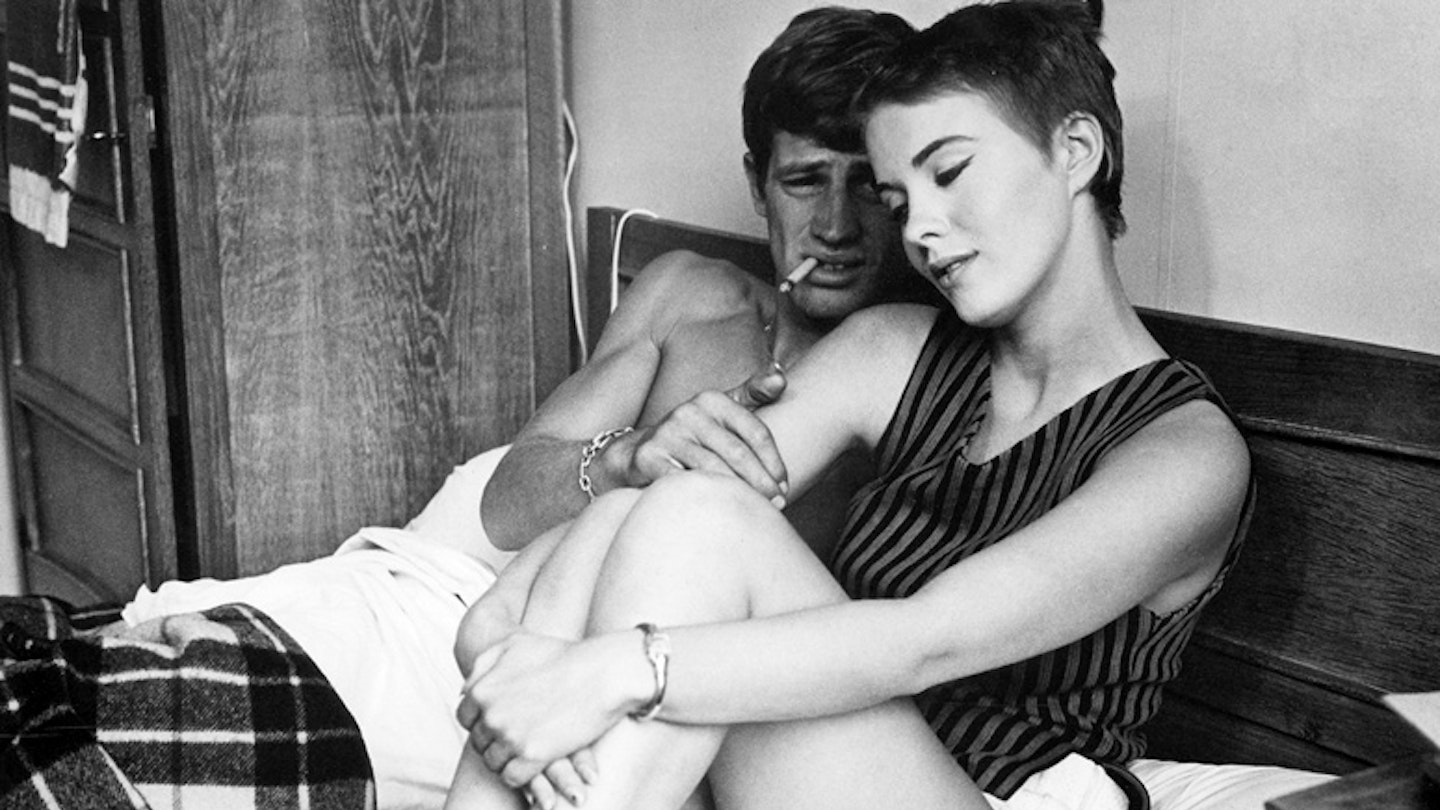Key filmmakers: Alain Resnais, Jean-Luc Godard, François Truffaut, Agnès Varda, Éric Rohmer, Claude Chabrol, Jacques Rivette, Jacques Demy
Key dates: 1959-1964
What is it? Fresh, funky and completely new, the filmmakers of the French New Wave – the ‘nouvelle vague’ if you want to be all Gallic about it – were smart, experimental and, crucially, French. Inspired by hardboiled American mavericks like Sam Fuller and Don Siegel, whose films they’d grown up on, they rejected formalism and tradition in favour of a punky new ethos. Instead of the long takes of stylists like Max Ophüls, the so-called “Cinéma du Papa” of the maligned René Clément or the theatricality of Marcel Carné, Jean-Luc Godard, François Truffaut and their peers were egged on by fellow film writer André Bazin and mainlined jolts of energy into their films with jump cuts, non-linear narratives, improvisation and plain old-fashioned, devil-may-care cool. All of a sudden, film could be rap as well as poetry.
Godard and Truffaut are the figures most associated with it, but it was arguably their fellow Cahiers du Cinema-er, Claude Chabrol, who kicked things off with his nouvelle vague-lite drama Le Beau Serge in 1958. From then on it was iconic moment after iconic moment. Think of Jean-Paul Belmondo’s fag-ash fatalism and Jean Seberg’s woodsprite charm in Breathless; Jean-Pierre Léaud’s fourth-wall-shattering defiance on the beach in The 400 Blows; the temporal mayhem of Last Year At Marienbad. Think cool hats and defiant spirits. It wasn’t all pixie crops and t-shirts, though. Dividing across the Seine, Left Bank directors like Alain Resnais and Chris Marker took a more consciously artistic approach with experimental films like Hiroshima Mon Amour and La Jetée, as their cine-literate Cahiers peers were tearing up the rulebook altogether.
What to watch: The 400 Blows (1959), Hiroshima Mon Amour (1959), Breathless (1960), Jules And Jim (1962), Cléo From 5 To 7 (1962), Bande À Part (1964), Pierrot Le Fou (1965)
What did it influence? Any film movement prefixed by the word ‘new’ (New Hollywood, New German, the Czech New Wave etc.) carries a debt to Godard and co., although John Cassavetes was blazing a similar trail on the other side of the Atlantic in the late '50s. The enduring impact of the movement can be felt in movies as diverse as The Life Aquatic (which quotes directly from Jules And Jim), Pulp Fiction and The Conversation. It was also for the nouvelle vague filmmakers that American critic Andrew Sarris coined the term “auteur theory” and the arguments over what it means and who it applies to haven’t stopped since. Thanks Andrew.
Trivia: Quentin Tarantino’s production company, A Band Apart, is named after Godard’s Bande À Part.
What to say: “Chris Marker, Alain Resnais and Agnès Varda spearheaded the more studied, Rive Gauche-style school of New Wave directors.”
What not to say: “Anyone got a copy of the script?”
